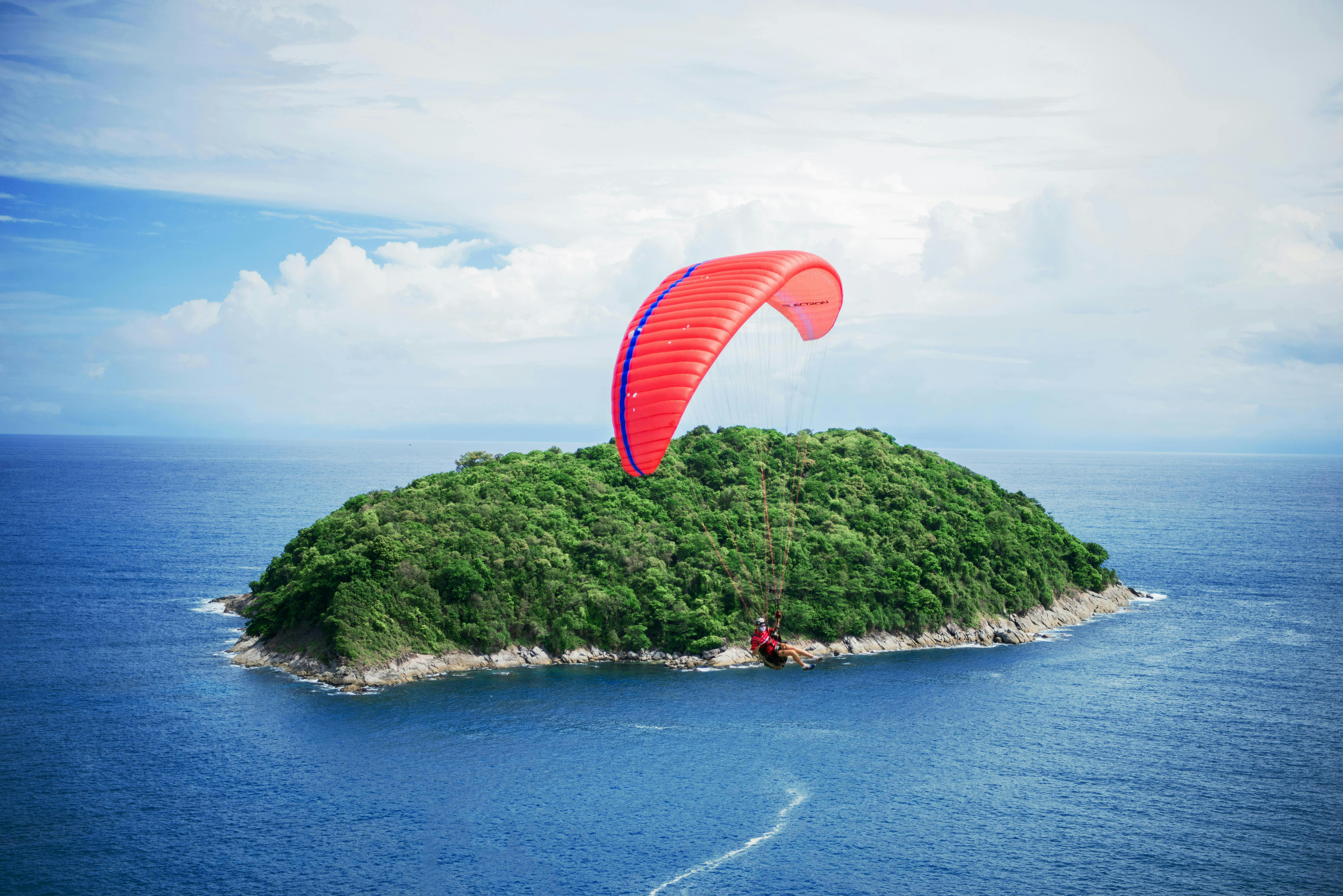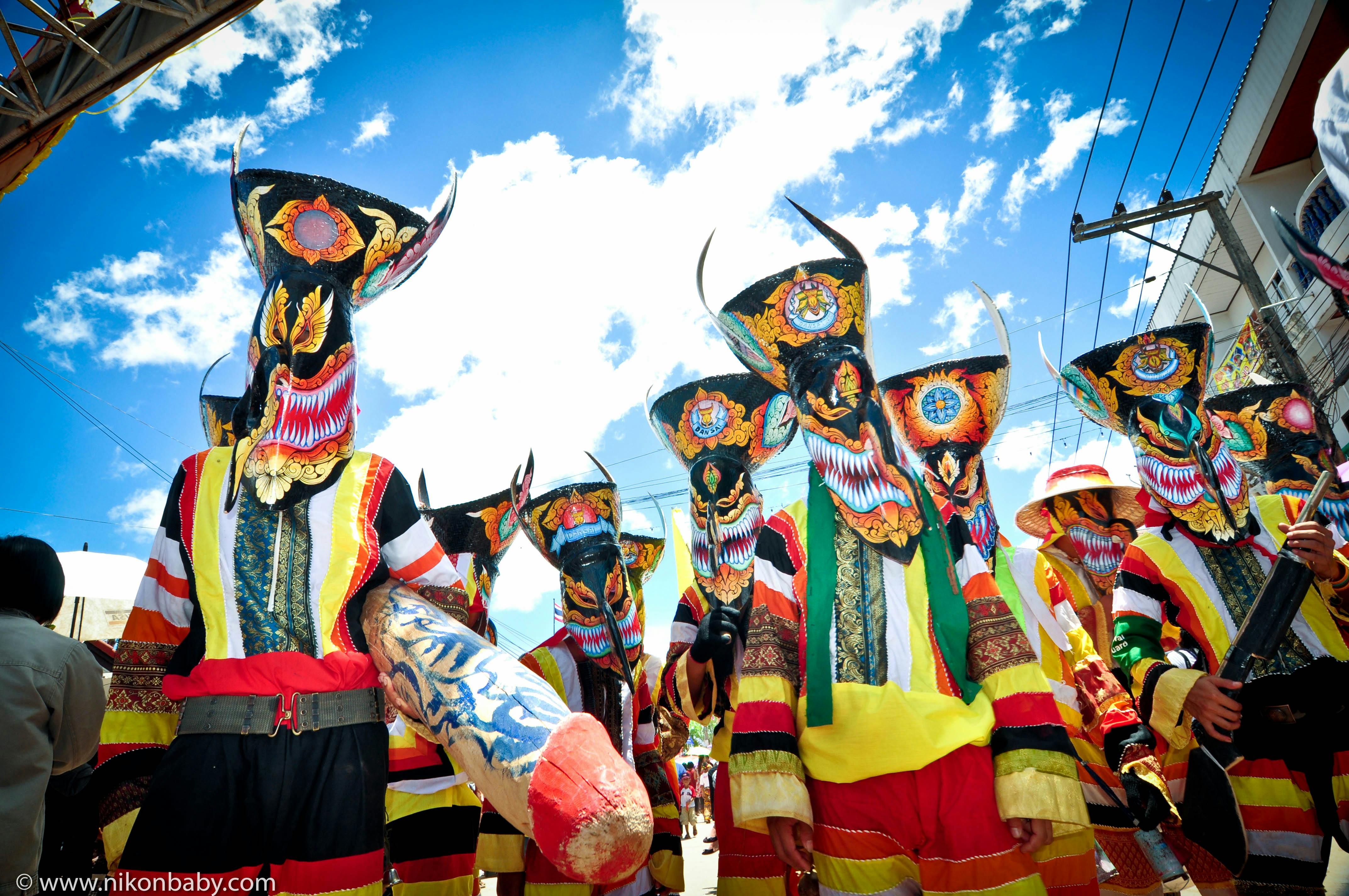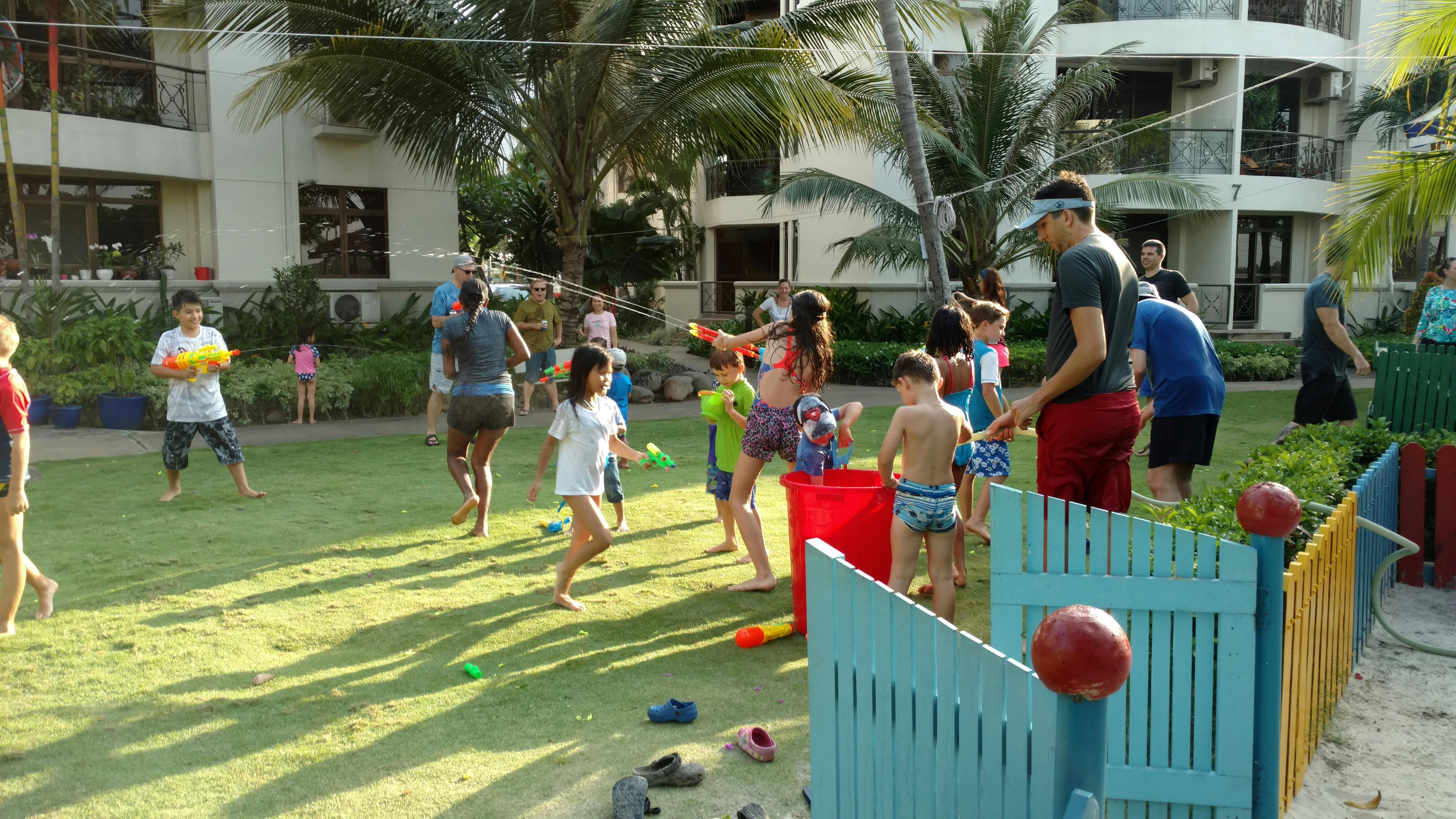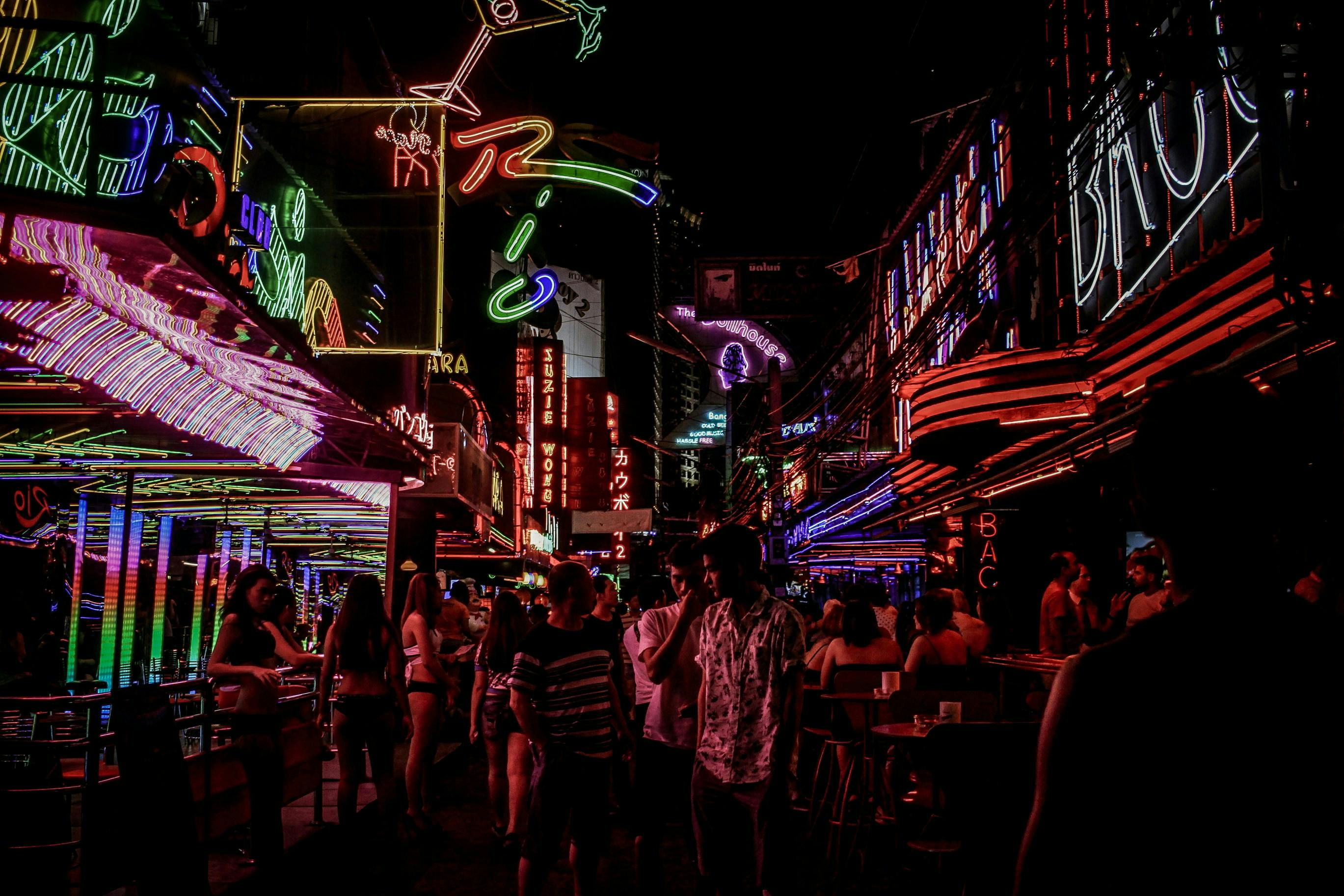Best Time to Visit Thailand

Why It’s Essential to Choose Right Time for Your Trip ?
Thailand, famous as an all-year-round destination, underscores the importance of timing. Its tropical climate gives warm temperatures all year but offers quite different experiences in its seasons—hot, cool, and rainy ones.
The best time to visit Thailand impacts your experience and your pocket because seasons affect weather conditions, local events, and even prices. For example, traveling during the peak season in a destination provides the promise of good weather and some lively festivals but comes at a cost and with some crowded attractions. However, off-season travel provides peace along with cheaper rates but may encounter less pleasant weather.
The cool season from November through February is ideal for beach-going and temple-visiting; the rainy season from June through October makes for lush landscapes at low prices. Whether you seek sunny skies festive happenings or serene escapes, planning your trip according to the season will make it memorable in ways that suit your preferences.
Heavy Discounts are Going on All: Thailand Tour Packages
Seasons in Thailand
Thailand in Winter (November to February) - Peak Season
Weather & Temperature Insights:
Thailand during this period would be an excellent outdoor activity spot. The climate is generally warm and pleasant, with temperatures ranging between 20°C and 30°C., so people can engage in various activities comfortably, this is one of the best time to visit Thailand. Light breezes along with low humidity levels offer a refreshing experience, especially to those who venture into Thailand's numerous outdoor attractions. It is cooler in the early mornings and evenings when people can stroll or explore culturally. With neither too much heat nor rain, Thailand in Winter season is the best time for uninterrupted enjoyment of what the country has to offer.
Winter Season highlights:
Bangkok: The capital, Bangkok, is a very busy modern but traditional bustling capital. Its streets are always alive with some form of cultural performance, lively markets, and the enticing smell of Thai street food. Some places should be visited.
The Grand Palace: An impressive historic monument showing elaborate architecture and the Emerald Buddha.
Floating Markets: Take a cultural excursion to Damnoen Saduak or Amphawa, where local delicacies, fresh produce, and handmade crafts are available for purchase.
Read More about best time, location of: Floating Markets in Bangkok
Chiang Mai: Chiang Mai is in northern Thailand and is a peaceful escape due to its mountainous surroundings and spiritual attractions.
Temple Tours: Visit ancient temples like White Temple, Dragon Temple, Wat Phra Singh and Wat Chedi Luang to witness their rich history and breathtaking design.
Hiking Adventures: Discover the dense jungles, waterfalls, and hill tribe villages that are splattered across Chiang Mai’s mountains.
Night Markets: Experience local life by visiting the colorful night markets that offer a display of art, craftsmanship, and unique souvenirs.
Phuket: This island paradise attracts so many beach lovers and water sports enthusiasts. With its tranquil waters and sunny skies, Phuket is simply the best place to go island-hopping. Some of the more popular sights are:
Snorkeling and Diving: The clear turquoise waters are packed with vibrant marine life. Underwater adventurers will find the coral reefs of the Phi Phi Islands and Similan Islands unbeatable.
Perfect for sunbathing, Scuba diving, swimming or just lazing at the beach, Patong Beach is all that you want.
Old Town Phuket: Explore the roads decorated with Sino-Portuguese architecture and charming small cafes.
Koh Samui and Krabi: Besides, Koh Samui and Krabi have much to offer besides the big cities of Bangkok, Chiang Mai, and Phuket during this season. Their unadulterated beaches, calm environments and amazing luxury resorts provide an exceptional holiday experience.
Must-Try Activities in Winter
A trip to the Grand Palace, sightseeing in ancient temples, snorkeling in Phuket’s turquoise waters along with trekking through Chiang Mai’s mountainous regions.
Major Events: The November Loy Krathong Festival is a stunning sight, where residents float lanterns along with baskets in the water.
What to Pack: Lanterns for the evening, sunscreen, and walking shoes can be useful.
Crowd & Pricing Insights: Thailand remains the preferred destination during this period, thus the footfall at various tourist hub spots is comparatively higher. Places like the Grand Palace and some beaches in Phuket and Krabi would be relatively more crowded than others, especially on weekends and public holidays. Airfares and hotel rates are generally increased due to the surge of international travellers.
To manage costs and ensure availability:
- Book your flights in advance: Buy your tickets several months ahead to ensure flights are affordable.
- Consider alternative destinations: Bangkok and Phuket are popular, so you can go to places like Hua Hin or Pai as those are less crowded and give a peaceful experience.
Let's Find the answer of: Does It Snow in Thailand?
Tips to Visit Thailand in Winter Season:
- Plan ahead: make arrangements for hotels, tours, and tickets to events in advance so that you do not have any disappointments at the last minute. Also, look for discounts and packages that offer attractions in a bundled form.
- Use Local Guides: A local guide will have much knowledge and make your experience much richer by explaining the culture, history, and many hidden treasures of the place.
- Travel Off-Peak Hours: Popular attractions can be much less crowded in the early morning or late afternoon than at midday.
- Stay Hydrated: It’s easy to become dehydrated in the heat of tropical weather. Carry a reusable water bottle and refill it often.
- Learn a Few Basic Thai Phrases: Although most people do speak English, learning a couple of words in Thai, such as "Sawadee" for hello and "Khop Khun" for thank you, makes the interaction much better.
Thailand in Summer (March to June) - Shoulder Season
Weather & Temperature Insights:
Thailand is hot and humid during this season, with temperatures ranging from 30°C to 40°C (86°F to 104°F). The coastal areas offer some relief due to sea breezes, while inland areas, especially Bangkok and Chiang Mai, can get very warm. Irregular rains towards the end of May and early June mark the onset of the monsoon season with temporary relief from heat as given by rains.
Humidity can make the heat more intolerable, thus one has to plan wisely. Outdoor activities are generally more comfortable in early mornings and late evenings while afternoons are best spent in shaded or air-conditioned areas.
Summer Season highlights:
If you prefer a quieter and more relaxed atmosphere, the shoulder season is the best season to visit Thailand. During this period, fewer tourists invade popular destinations like Phuket, Koh Samui, and Krabi, which means these places can be enjoyed with not so many people around their gorgeous beaches, crystal-clear waters, and lush surroundings.
On the coast, cities like Bangkok and Chiang Mai become easier to visit too, with fewer queues at places like the Grand Palace or Wat Phra Singh. While markets, temples, and cultural sites are still visited, there is far more serenity than the hustle and bustle of peak-season crowds behind them.
For adventure seekers, Thailand in Summer is perfect for visiting the less popular islands and national parks, many of which are still hidden treasures. Nature lovers in search of peace and beauty will find the Similan Islands and Khao Sok National Park to be ideal spots.
Must-Try Activities in Thailand in Summer
Celebrate Songkran (Thai New Year): Songkran is Thailand's most famous festival, happening in mid-April. Water fights characterize this large-scale festival celebrated throughout Thailand, with major celebrations taking place in Chiang Mai, Bangkok, and Phuket. Traditional aspects involve going to temples and participating in merit-making ceremonies.
Beach Escapes: Coastal destinations such as Koh Samui, Krabi, and Phang Nga Bay offer excellent sunbathing opportunities, snorkeling, and water sports. Discovering lesser-known coves and unspoiled stretches of sand is perfect with fewer visitors around.
Also Read: Best Islands in Thailand
National Park Exploration: However, the mornings in Erawan National Park and Khao Yai National Park are refreshing and rewarding despite the heat, with waterfalls, wildlife, and vibrant green scenery.
Culinary Delights: The summer in Thailand brings several seasonal fruits, including mangoes, durians, and mangosteens. A local favorite dessert that you must try when visiting is mango sticky rice.
Cultural Tours: Visit the quieter season temples and historical sites of Ayutthaya and Sukhothai, soaking up Thailand’s vibrant history.
Major Events in Summer Season:
The highlight of the season is Songkran, which is celebrated from April 13 to 15. Though most of the focus goes to the water fights, Songkran significantly represents renewal and cleansing in Thai culture. Traditional practices involve pouring water on Buddha images, making prostrations to monks, and sharing time with relatives.
What to Pack for a Thailand Trip in Summer
Pack lightweight, breathable clothing made of cotton or linen to keep cool, plus a hat, sunglasses, and high-SPF sunscreen to protect against sun exposure. Comfortable footwear is a must; flip-flops for the beach and sneakers when exploring. A reusable water bottle to stay hydrated would be good as well. In addition, an umbrella or raincoat in case it rains, and bug repellent to avoid mosquito bites.
Read here about: What to wear in Thailand
Crowd & Pricing Insights
In Thailand, summer is considered a shoulder season with moderate crowds. Tourists tend to visit Thailand more during the cooler months of November to February, thus making this period perfect for those wanting to avoid large groups of visitors. This is often the case in hotels, tours, and flights, making it an affordable time to discover Thailand.
Popular destinations such as the Phi Phi Islands or Railay Beach are less crowded, so you can appreciate their beauty without the typical hustle. Likewise, eateries, pubs, and local markets offer a more peaceful dining and shopping experience.
Tips to Visit Thailand in Summer Season
- Stay Hydrated: Stay properly hydrated during the day, so much more if you will be involved in outside events.
- Plan Around the Heat: Plan outdoor activities for the mornings or evenings. Afternoons can be spent indoors resting or visiting air-conditioned places like shopping malls and museums.
- Use Public Transport or Taxis: Avoid walking too far under the sun. In such cases, you may opt for tuk-tuks, taxis, or Grab ( Thailand’s ride-hailing app) system.
- Embrace the Festivities: If you are visiting during Songkran, then carry along a waterproof bag for your valuables because you will be having water fights.
- Book in Advance: While there are fewer crowds, popular places to stay and tours fill up quickly too, especially during Songkran.
- Respect Local Customs: On your visit to temples and religious sites, dress modestly. You must note that it is even in the heat.
Also Read About: Is Thailand Safe for Solo Female Travellers?
Thailand in Monsoon (July to October) – Off-Season Travel Guide
Weather & Temperature Insights:
The weather in Thailand during the monsoon is pretty much characterized by high humidity and frequent rains, which are sometimes quite heavy but of short duration. This season is also one of the best time to visit Thailand. Most of these rain showers happen in the afternoon or evening hours, with mornings often crisp and dry.
Temperatures range from a pleasant 25°C up to 32°C, making it warm but tolerable—even with the humidity. It is particularly in northern regions and national parks where rainfall bolsters Thailand's natural beauty by showering it with lush, green landscapes built up by frequent rains. While downpours interrupt outdoor activities, they usually don't last long enough for most travelers to be severely inconvenienced.
To Plan Your Trip, You Must be Aware of: Worst Time to Visit Thailand
Monsson Season Highlights
Monsoon season in Thailand is perfect for the kind of traveler who seeks a peaceful, tranquil experience. While the country’s lush landscapes are bursting with healthy greenery, it’s everywhere except Kanchanaburi where falls like Erawan Falls are at their most stunning.
Northern Thailand is particularly renowned for hill tribes and natural beauty, and it is very beautiful during monsoon months. The rains make the region a lush, tropical paradise while offering ample opportunities for exploring off-the-beaten-path areas of Thailand and enjoying its serenity; this is especially true when fewer visitors come during the offseason. This contributes to creating a calm ambiance that can be well appreciated by those seeking an escape from the usual tourist crowd.
Read this Season-wise Created Guide on: Best Part of Thailand to Visit
Must-Try Activities in Monsoon Season
Spa Retreats: Experience some of the best international spa treatments and Thai massages at peaceful countryside resorts. Chiang Mai, Phuket, and Koh Samui provide pampering experiences with rain-soaked vistas.
Cultural Landmarks and Temples: Ancient temples of Chiang Mai, the magnificent palaces of Bangkok, and the ruins of Ayutthaya. The monsoon makes these religious places more colorful, thereby making it an ideal time for a quiet visit.
Trekking and Nature Tours: The jungles of Northern Thailand are lush and green in the monsoon. Enjoy treks through dense forests and hill tribe villages-just pack for the wet conditions.
Island Hopping & Lesser- Known Destinations: Koh Lanta, Koh Tao, and Koh Chang are less-crowded islands. These can be bought with lesser crowds and peaceful beauty perfect for monsoon travels along with some great deals.
Cooking Classes and Cultural Experiences: Perfect for a rainy afternoon, this is learning to cook Thai dishes like Pad Thai and Green Curry. Local chefs provide hands-on experiences that teach you many of Thailand's important culinary traditions.
Major Events in in Monsoon
The monsoon season in Thailand is accompanied by several unique cultural happenings, out of which the Candle Festival in July is the most notable. This festival, held in Ubon Ratchathani, marks the beginning of Buddhist Lent and involves elaborate candle sculptures along with colorful parades and traditional performances. It makes for a wonderful experience of Thai culture without the usual peak-season crowds.
What to Pack for a Thailand Trip in Monsoon
In the case of the monsoon trip to Thailand, one should carry waterproof clothes, a collapsible umbrella, and comfortable shoes in wet conditions. Light, breathable fabrics are required plus insect repellent to prevent mosquitoes. Be ready for the sudden rain and enjoy your trip without hassle.
Crowd & Pricing Insights:
One of the significant advantages of visiting Thailand during the monsoon season is that it receives relatively few visitors. During this off-season period, one can expect to find fewer people around the major attractions, thereby making it easier to explore places without their usual hustle and bustle. Thus, it becomes an economical time to visit Thailand while still enjoying its charm and cultural richness.
Tips to Visit Thailand in Monsoon Season:
- Check the weather forecast for specific regions, as rainfall varies across Thailand.
- Islands in the Gulf of Thailand typically receive less rain, making them great for outdoor and adventurous activities.
- Stay informed about regional rain patterns to maximize the fun of your trip.






